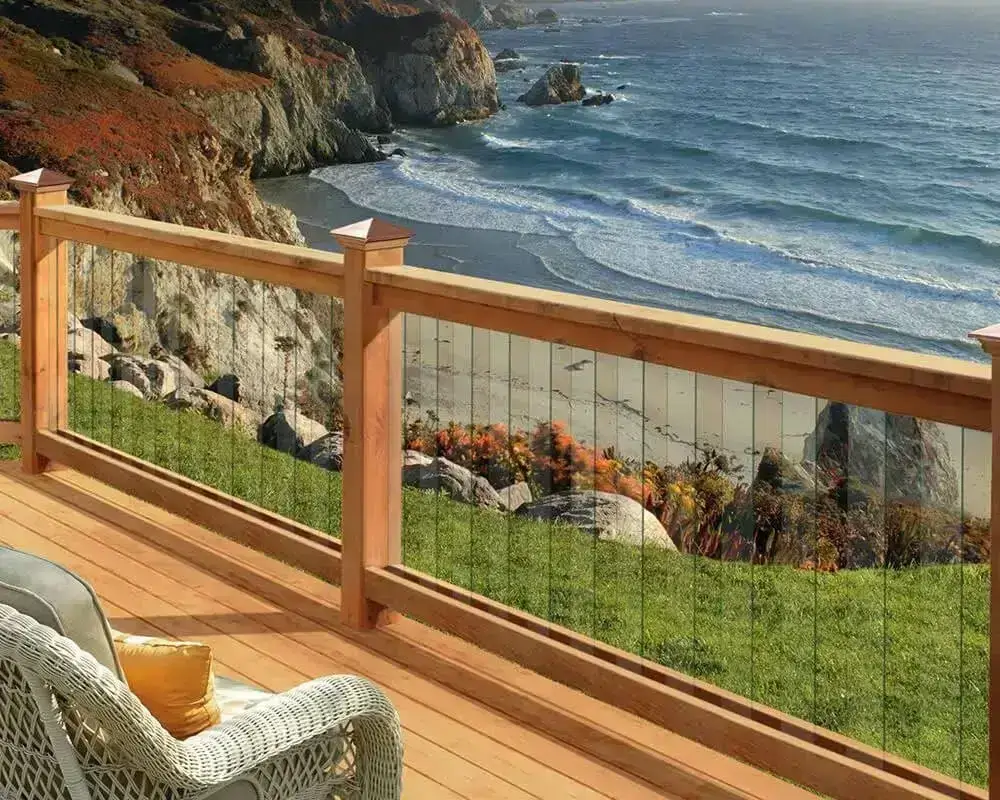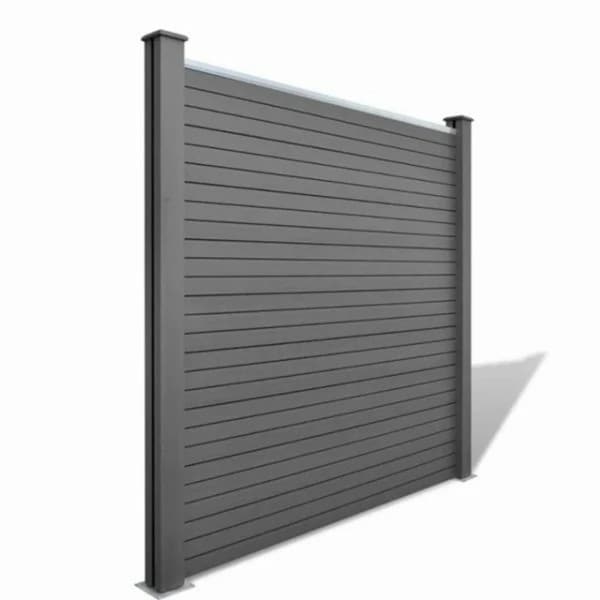Address
304 North Cardinal
St. Dorchester Center, MA 02124
Work Hours
Monday to Friday: 7AM - 7PM
Weekend: 10AM - 5PM
Address
304 North Cardinal
St. Dorchester Center, MA 02124
Work Hours
Monday to Friday: 7AM - 7PM
Weekend: 10AM - 5PM

This blog compares wood plastic composite fencing and wood fencing in terms of performance, price, and maintenance to help you find the products you need.
Before the appearance of WPC fences, wooden fences were the most popular outdoor decoration materials. The two are similar in visual effects, and there are obvious differences in durability, lifespan, initial price, maintenance requirements, etc.
Wood plastic composite fencing consists of composite fencing panels which are made of recycled wood fiber and recycled plastic. It shares the same raw material with composite decking and other WPC products. A wood-plastic composite fence can be recycled completely. There is no need to worry about cutting more trees or causing more garbage.
As a newly emerging fencing material, it owns competitive advantages over traditional wood fencing. Next, let’s compare and analyze the similarities and differences between the two.
Visual Effect. Composite fencing shares a similar natural appearance to wood fencing. Due to the uniqueness of its raw materials, it provides the color and texture of wood simultaneously. It is more like wood than aluminum, metal, vinyl, and other materials.
Machinable. Both wood plastic composite fencing and wood fencing can be nailed, drilled, cut, fixed with nails or screws, etc. for other usages.
Durability. The durability of the fencing is reflected by its resistance to external environmental factors. The wood-plastic composite fencing is more durable with stronger waterproof, fireproof, anti-corrosion, moisture-proof, and insect-proof features. It has better stability than wood and is not easy to expand and contract, crack or deform due to temperature fluctuations.
Lifespan. Composite fences can last up to 20 years or more, which is higher than wood fences. The cost-effectiveness is higher in the long run.
Initial price. The price of wooden fences is usually around US$15 per foot, while the price of composite wooden fences may be US$25 or more per foot.
Maintenance requirements. There are significant differences in maintenance requirements between the two. Wooden fences need annual staining, sealing, or painting. The wood-plastic fence only needs occasional cleaning to keep it clean and beautiful for a long time. The maintenance cost of money and time varies a lot.
Hollow design. Composite fences can be designed as hollow, but wooden fences cannot. The hollow design can reduce the weight of the fence and save materials.
Nail-holding. The nail-holding power of wood-plastic composite fences is stronger, 2-5 times that of ordinary wood.
Installation. The installation of composite fencing is more simple and convenient than wood, saving time and cost.
| Comparisons Materials | Wood fencing | Composite fencing |
|---|---|---|
| Similarities | Natural wood effect | Machinable |
| Differences Lifespan | A few years | 20+ years |
| Initial Price | $15 per foot | $25 per foot |
| Maintenance Requirements | Annual staining, sealing or painting | No maintenance required |
| Hollow Design | N/A | Available |
| Nail-holding | Intermediate | 2-5 times stronger |
| Installation Difficulty | Intermediate | Much easier |
Unifloor provides a basic fence with 4 different specifications and a DIY wall panel. Customized service also be offered. Composite fencing can be widely used in gardens, farms, parks, and other outdoor locations.


As for the DIY wall panels, there are 2 kinds of basic or co-extrusion surface treatments, and 8 colors to choose from, 6 accessories to assemble, and detailed installation instructions.
In addition to the advantages described above, Unifloor’s composite fencing has more pros.
Contact US!
Aludream is a leading manufacturer and supplier of composite railings in China. If you have any needs, please contact us for more information.
12A, No. 855, Changning Road, Changning District, Shanghai
July@cnaludream.com
Denise@cnaludream.com
+86 13371983062
+86 15392757672